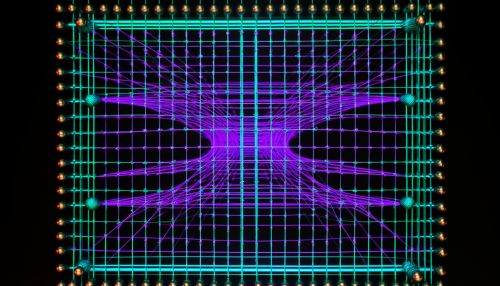CNOT gate
Introduction
The Controlled NOT gate (also known as the CNOT gate) is a fundamental element in quantum computing. This two-qubit gate, which is a type of quantum logic gate, performs a NOT operation on a target qubit if and only if a control qubit is in a certain state. The CNOT gate is a crucial component in the creation of many quantum algorithms and circuits.


Operation
In the context of a quantum circuit, the CNOT gate operates on two qubits: a control qubit and a target qubit. The gate flips the state of the target qubit (from |0⟩ to |1⟩ or vice versa) if the control qubit is in the state |1⟩. If the control qubit is in the state |0⟩, the gate leaves the target qubit unchanged. This behavior can be summarized in the following table:
| Control Qubit | Target Qubit | Resultant State |
|---|---|---|
| 0⟩ | 0⟩ | 00⟩ |
| 0⟩ | 1⟩ | 01⟩ |
| 1⟩ | 0⟩ | 11⟩ |
| 1⟩ | 1⟩ | 10⟩ |
Matrix Representation
The CNOT gate can be represented as a 4x4 unitary matrix. The matrix representation of a CNOT gate is as follows:


Applications
The CNOT gate is used extensively in quantum computing. It is a fundamental building block for many quantum algorithms, including quantum teleportation, quantum key distribution, and quantum error correction. The CNOT gate is also used in the creation of quantum entanglement, a key feature of quantum mechanics that allows particles to be instantaneously connected regardless of distance.
